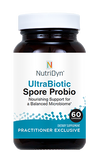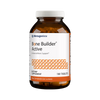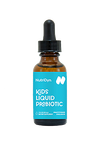short term, all added sugars, whether glucose or sucrose or other types, should be consumed in moderation. It is also important to keep in mind that this study was done over a 2-hour time course, so we don’t know the longer-term differences and how this will affect body weight and health outcomes.”
“We found that sucrose, commonly known as table sugar, is not as effective at increasing hunger-suppressing hormones when compared with glucose, a simple sugar and the body’s main energy source,”
Can Different forms of sugar influence hunger response in young adults
- News
- 31 Jul, 2021
Yes
Table sugar may be less efficient in provoking a satiety response compared with oral glucose, and individual biological factors also influence peripheral hormone responses to sucrose vs. glucose consumption, study data show.

The attached blog has been edited, Reed Wilson, director of Health and Communications from this original site https://www.healio.com/news/endocrinology/20210115/different-forms-of-sugar-influence-hunger-response-in-young-adults

Page and colleagues analyzed data from 69 healthy adults without diabetes who were weight-stable for 3 months before recruitment for a larger study examining neuroendocrine responses to high-reward foods (29 men; mean age, 23 years; mean BMI, 27.03 kg/m²). For the substudy, participants consumed 300 mL drinks on two occasions containing 75 g of glucose or sucrose after a 12-hour overnight fast. Participants provided blood samples at baseline and 10, 35 and 120 minutes after consuming drinks to assess plasma glucose, insulin, GLP-1, peptide YY (PYY) and acyl-ghrelin measures. Hormone levels were compared between conditions using a linear mixed model. The findings were published in The Journal of Clinical Endocrinology & Metabolism.
Researchers found that sucrose vs. glucose ingestion provoked a less robust rise in glucose (P < .0001), insulin (P < .0001), GLP-1 (P < .0001) and PYY (P = .02). There were no between-drink differences when assessing levels of acyl-ghrelin suppression.
Researchers observed BMI status by sugar interactions for glucose (P = .01) and PYY (P = .03). Additionally, participants with obesity experienced smaller increases in glucose and PYY levels after consuming sucrose vs. glucose compared with participants with normal weight or overweight. There were interactions between insulin sensitivity and sugar for glucose (P = .003) and insulin (P = .04).
In models stratified by sex, men had a less pronounced increase in plasma GLP-1 after consuming sucrose vs. glucose compared with women (P < .0001). There were no between-drink differences observed in men for PYY levels; however, women experienced a decrease in PYY area under the curve after consuming sucrose vs. glucose (P = .03).
“Individuals with obesity had smaller increases in plasma glucose and PYY levels after consuming sucrose compared to glucose,” the researchers wrote. “Independent of BMI, there were interactions between insulin sensitivity and sugar type on the rise [of] plasma glucose and insulin levels. In addition, when compared to females, males had smaller increases in GLP-1 in response to oral sucrose vs. glucose.”
The researchers noted that the findings highlight the importance of considering individual characteristics that may affect the metabolic consequences of consumption of specific nutrients, such as different types of sugar.
“Knowing these differences occur in healthy, young adults sets the stage for future studies to examine how sucrose vs. glucose affects appetite-regulating hormones responses in other age groups and in people with health conditions, such as diabetes,” Page said. “Longer studies are also necessary to know how these differences translate into body weight control and overall health.”
For more information:
Kathleen Page, MD, can be reached at katie.page@usc.edu.













